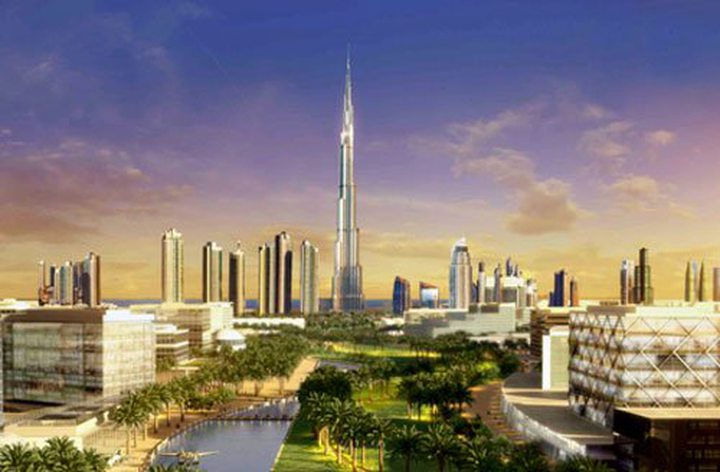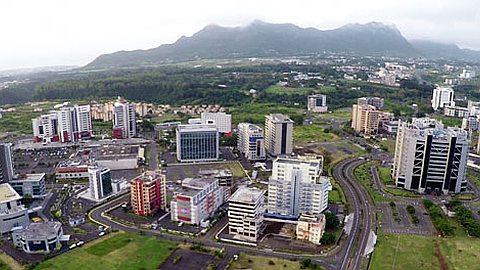Middle East Attractive for Mixed-Use Projects

While Dubai has been the driving force behind the creation of mixed-use developments, other cities in the United Arab Emirates and the Gulf came up with their own plans.
“A lot of consultants would tell you you’re crazy when you tell them about some of the large projects here in the Gulf, such as in Dubai, but history here has proven it can work. It really depends on the developer, his standards and how much he’s committed to invest,” said Filippo Sona, director and head of hotels, Middle East/North Africa region, at Colliers International.
Events drive development
“Dubai is capturing a big market share,” he added. “There are further great opportunities for development in Saudi Arabia, Abu Dhabi (United Arab Emirates), Dubai, Qatar and Egypt in terms of hospitality development in large master-planned projects.”
Countries are driven to bring large events to the region. The unveiling of multibillion-dollar mixed-use project Sheikh Mohammed Bin Rashid City in Dubai, which will have a park larger than London’s Hyde Park, the world’s largest shopping mall and a Universal Studios, is an indication that particular project may require 100 hotels.
In Qatar, the FIFA World Cup 2022 is “greasing the wheels of Doha’s transformation and accelerating developments,” said Christopher R.J. Knable, COO at Katara Hospitality, formerly Qatar National Hotels, which has developed the Qatar-born Merweb brand for its Qatari properties.
In Qatar, Lusail City and the regeneration of Doha’s city center are developments already underway.
“Large-scale developments play an important transformational role to the brand Qatar. For example, the twin tower Lusail Marina Hotel’s unique design will become a symbol of the country,” he said. “Dubai has done great in terms of development and branding itself, and Doha is going the same path, with Qatar Airways’ growth and improving facilities.”
Changing landscape
Kevin Underwood, VP and principal of Aecom Design + Planning, which is involved in the design and planning of major mixed-use projects in the Gulf, including Abu Dhabi’s Al Raha Beach and Masdar City, as well as Qatar’s Education City and Doha’s Mshereib, said he is excited about the changing urban landscapes.
“Mixed-use communities are truly transformational,” he said. “In the past, developers tended to separate residential and commercial,” but now people want to live in a pleasant and secure environment.
However, he’s cautious about these large-scale projects.
“In Qatar, it is the first time they embarked on these kind of communities,” he said. “It’s great, but they shouldn’t build too many hotels. We know what happened in other cities who hosted the Olympics and other major events. The purpose-built areas often end up ghost towns when it’s all over.”
Demand generators
“There has been so much focus on supply but less focus on supply generators. Urban planners and developers must remember that new hotels will remain brick and mortar with no life,” Sona of Colliers said.
Part of the Abu Dhabi Economic Vision 2030 plan is to transform and diversify the emirate with large-scale mixed-use developments. Saadiyat Island, for example, is set to become a premier residential and leisure development, focusing on culture, a university quarter and the Guggenheim, Louvre and Sheikh Zayed museums, which are all under development.
“We do our research and looked at other success stories globally. We can see there is a demand for a development with high standards in Abu Dhabi,” said Ahmed Al-Fahim, executive director, marketing, communications, sales and leasing at TDIC, Abu Dhabi’s tourism development and investment company and developer behind Saadiyat.
Building real estate and leisure facilities, however, won’t guarantee an influx of people, he said. To combat this, Al-Fahim branded Saadiyat by pulling people to the museums and golf course.
“You need the government support to front the major infrastructure investment and then investors to participate in the development of hospitality, and other real estate and leisure components,” he added.
Developers and a city’s vision have to support each other, Sona said.
“We’re living in a time of transformational experience where developers can’t live in isolation but need to take into account people’s perception, becoming part of a wider strategy to develop a city. Saadiyat Island is a good example. It is part of the Abu Dhabi brand and the Abu Dhabi brand is helped by Saadiyat; they are interdependent,” he said.
The first existing hotel on the island is the St. Regis Saadiyat Island Resort.
“Hotel groups are very excited to get involved in Saadiyat. Rotana Hotels is preparing its concept plan, for example,” Al-Fahim said. “The development slowed down but on the whole things are happening and investors want to be part of it.
“We’ve had a 75% growth in the number of tourists in Abu Dhabi,” he continued. “People have started to trust the market, saved and now want to invest again and banks have the liquidity seeing a lot of opportunities.”
In Saudi Arabia, it’s the size of the Kingdom and population driving economic growth and urban development.
For example, at a value of around $8 billion, the King Abdullah Financial District in Riyadh includes many leisure developments, requiring hotels to fill the picture. InterContinental Hotels Group and Wyndham Hotels and Resorts are already there and other projects around Makkah will require dozens of hotel projects to come online.
“The next 20 years will be transformational for the Kingdom. The financial district in Saudi Arabia is one example to take note of,” Sona said, adding a metro station at Riyadh’s International Airport will be important in branding the city.
“The infrastructure is coming,” he added. “Developers need to plan early. A hotel needs three years from concept to open, really five years to become operational in any significant way.”
Underwood said developers need to keep a cool head over their cash flows, balancing expected revenues with development costs, hotel and surrounding infrastructure.
Knable took a pragmatic approach: “You have to do your due diligence, then take the risk and simply deal with anything that comes along.”





